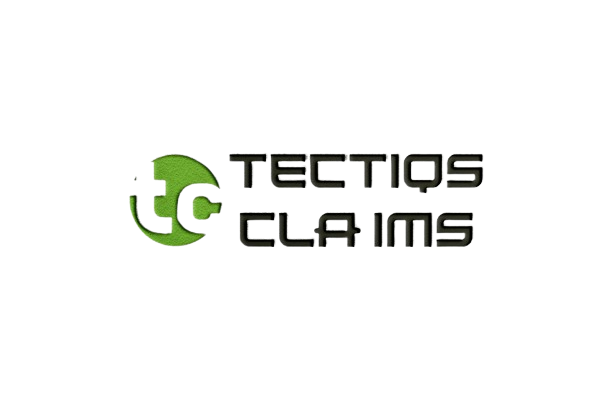Introduction:
This is the part where you introduce the blog post giving the reader a brief about what will it be all about as well as why is it important. The piece opens with some simple facts in the matter of Bee v Jenson (2006) and attaches significance to this particular matter by way of compensation claims. It also picks out the importance of understanding recoverable hire charges within those claims on the claimant’s side.
This sets the context for the readers, so they know what the blog post is going to deal with. The former hones in the case’s legal principles and how they can apply to future instances. The role of the introduction is to inform the reader how so captivating the case is and demonstrate its importance to your an her=” class=”glossary Link”>evidence based response /a> clearly convinced the reader to read further.
Incident Background:
Bee v Jenson (2006) to fully appreciate the following aspects of the law, it is vital to remember the events behind Bee v Jenson (2006) Parties: This is a question to be answered by the Supreme Court by next session the claimant, Bee, had damaged their car and sought damages for hire charges for a replacement vehicle.
The party that was held responsible for the damage was Jenson, defendant in the case. It is crucial to appreciate how these parties coexist, as their interrelationship also paves the way for any litigation that may follow. This entry next looks to the surrounding events to the claim. This could be a narrative of the event, of the car accident that caused damage to the vehicle, when and where the incident took place and how exactly did it all happen.
This afterward for readers to imagine what was happening and to understand why Bee ended up needing a new car. This gives readers a solid foundation to understand the dispute, and in turn the court rationale and relevance of the decision for future like claims. This section not only educates but it also involves, this letting the readers know of the human and situational cars behind the legal case.
The Principle of Impugning Losses:
The principle of diminishing losses, or obligation to mitigate, is a critical principle in claims for compensation. Which says that a claimant must limit, as far as is reasonable, his losses after an event for which he is seeking compensation. Its applications in the verbal reputation from the law can be maintained in Bee v Jenson (2006) if a claimant’s car is damaged, and then they are supposed to reduce exposure using a cost-efficient transportation option during the repair.
This may include renting an affordable substitute car or using other modes of transportation as a viable alternative. The minimization loss principle requires that claimants do not make the situation worse for themselves in obtaining compensation, or may suffer losses which may unnecessarily magnify the compensation of the required output. This case focused on whether Bee had taken appropriate steps to reduce the cost of hiring the replacement vehicle falling within the duty to mitigate.
Knowing this can bring to light the role being claimed/not claimed and makes aware the balance between making sure he gets a fair shake, and being moderate with the money this is all going to cost. Readers can reflect on this idea and learn about the legal standards that apply to claimants and those standards can impact the results of compensation claims.
Application in Bee v Jenson (2006)
This part provides an understanding of how it was applied in Bee v Jenson (2006) and the way court interpreted and conclusions obtained. The key obligation of the court was to ascertain how long Bee could properly claim the hire charges in respect of a replacement vehicle during the repair of their own vehicle. They included considering the time taken for repairs to be reasonable, and whether it was necessary to hire a replacement vehicle during this period.
The court looked at factors like the kind and ugliest of the damage done to Bee’s vehicle, the standard repair time for that kind of damage, and whether any delays in fixing the car were warranted. In that context, the court ventured to strike that balance so that Bee would be fairly remunerated in respect of their real need for a substitute vehicle, but no more, which this view avoided the hire charges would be significant and prolonged, and such prolonged unnecessary expenditure would arguably not amount to mitigation of loss. Scrutinizing these factors, the case provides guidance on how the courts will assess the reasonableness of costs claimed and of the efforts by the Claimants to mitigate their loss.
By applying the test of reasonableness and basic waterfall legal concepts such as the duty to mitigate in a practical real-world example, readers should gain little doubt as to what the duty to mitigate is and how it plays a role in the damages claims recoverability of hire charges.
Impact on Compensation Claims:
The case of Bee v Jenson (2006) has serious implications for future compensation claims, in particular the issue of hire charges to cover the cost of replacement vehicles. Perhaps the most important takeaway is the emphasis on the claimant’s obligation to mitigate losses, meaning that claimants cannot simply let expenses run wild after an event. For this reason, this case is an important one because it shows that future courts will likely pay close attention to the period over which hire costs are sought in an attempt to ensure that period reflects what is a reasonable period for repairs to be completed to a damaged vehicle.
Furthermore, legal professionals may now advise their clients on the need to preserve evidence and show that they exercised reasonable care during the repair process, and took steps to document themselves and/or the dealer in connection with any repair, tracking the manufacturer back to support their claims. Understanding this precedent can assist claimants to temper their expectations and actions following an incident as higher or excessive hire charges may not be reimbursed. The case can also be cited to contest inflated claims by insurers and defendants on the basis that only necessary and reasonable costs should be remunerated.
In sum, Bee v Jenson (2006) reflects a balance being struck in relation to equitable compensation and the responsibility of individuals to mitigate their losses, mapping a template within which similar claims can be scrutinized in the future. This knowledge can eventually foster smarter, more efficient claim management — benefitting the claimants and defendants equally in the process.
Conclusion:
The ending of the discussion is concluding the few expects of the case of Bee v Jenson (2006) which were most in need of reflection in the wider context of compensation claim that this article covers. This demonstrates the importance of the principle of minimalists and how this principle is relevant in the case to calculate the recoverable hire charges for a replacement vehicle.
This conclusion serves to emphasize that claimants should be cautious in their approach, being careful to document their activities as diligently as possible, with a clear reminder to the careful consideration given by the court to the reasonableness of the repair period and the hire charges. Further, it stresses that cases like this one serve as legal precedents that help set guidelines for both claimants as well as legal professionals dealing with similar such disputes.
Finally, the conclusion discusses the wider implications of the case, proposing that if we appreciate and exercise these principles we may achieve just and proportionate compensation. It even opens the door for the reader to start thinking about what they must do in practice to feel in line with the legal expectations, leaving to answer how you can be savvy avoiding these complications in your compensations. This final part should help you leave your readers with a clear understanding of your recommended solution and the case study takeaways.


